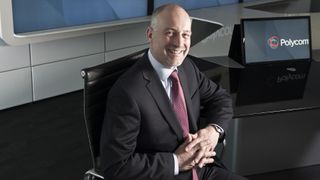Five predictions for the enterprise workplace of the future
CIOs should already be planning for the future

The workplace of the future is an ever-shifting concept. In the past, predictions often focused on the sci-fi and fantastical, with images of hover-cars and jet packs. Now though, the proliferation and uptake of modern technologies means that the workplace of the near future can be predicted much more accurately. More importantly businesses, and in particular the CIO, can begin to plan for and design their workspaces around future requirements.
When designing the workplace of the future there are five key shifts for CIOs to bear in mind.
1. Video's new value
Phone calls and emails are no longer enough to run an efficient and productive operation. Everyone, from your employees to your partners and customers, is becoming more familiar with a range of communications technologies.
The average person uses Skype or FaceTime in their personal life, so they are familiar with the benefits of face-to-face communication in this way. The CIO needs to make sure that video is an equal option within the unified communications mix, and that it is incorporated into business processes the same way voice and email are.
2. The future is not a place
Technology is having the biggest impact on our working practices, particularly technologies that can be accessed from anywhere such as the cloud. New and improved collaboration tools are making it possible to conduct ad-hoc meetings anywhere, anytime. The rapid evolution of data networks means that the quality of these communications on smartphones and tablets is more than sufficient for enterprise VoIP and videoconferencing apps. The meeting room of the future will also no longer necessarily be a physical location.
3. The physical and digital are merging
The way we conduct business is now a hybrid of physical and digital interactions. Even when we meet face-to-face we organise our meeting with email, diary invites to our smartphones, content sharing during videoconferencing and instant messaging the last details before the meeting.
Beyond this, our physical spaces are becoming more connected. We can tap into our networks via our physical surroundings through voice activation and gesture control. By incorporating the digital into the physical, the business can incorporate every interaction into its CRM and ultimately its sales funnel.
Are you a pro? Subscribe to our newsletter
Sign up to the TechRadar Pro newsletter to get all the top news, opinion, features and guidance your business needs to succeed!
4. Data is king
This is because of the 50 billion connected devices and objects in the world that digitise every interaction, action and reaction. The fact that big data analysis is reaching the point where this data is converted into meaningful information means people expect to be able to use this information. In an enterprise context, this means your business leaders will expect this information to be delivered to them in a digestible format. The data you harvest from your connected intelligence should become business insight which is fed back into the functions to hone their processes and improve productivity.
5. Problems will be opportunities
Ultimately, technology is going to the biggest driver of change in the future. Business leaders, particularly the CIO, can and should plan for the future workplace now. By thinking ahead and understanding how emerging technologies can integrate into business processes, they will no longer be disruptive but productive.
- Andrew Hug is Vice President Sales Engineers EMEA at Polycom
Most Popular

